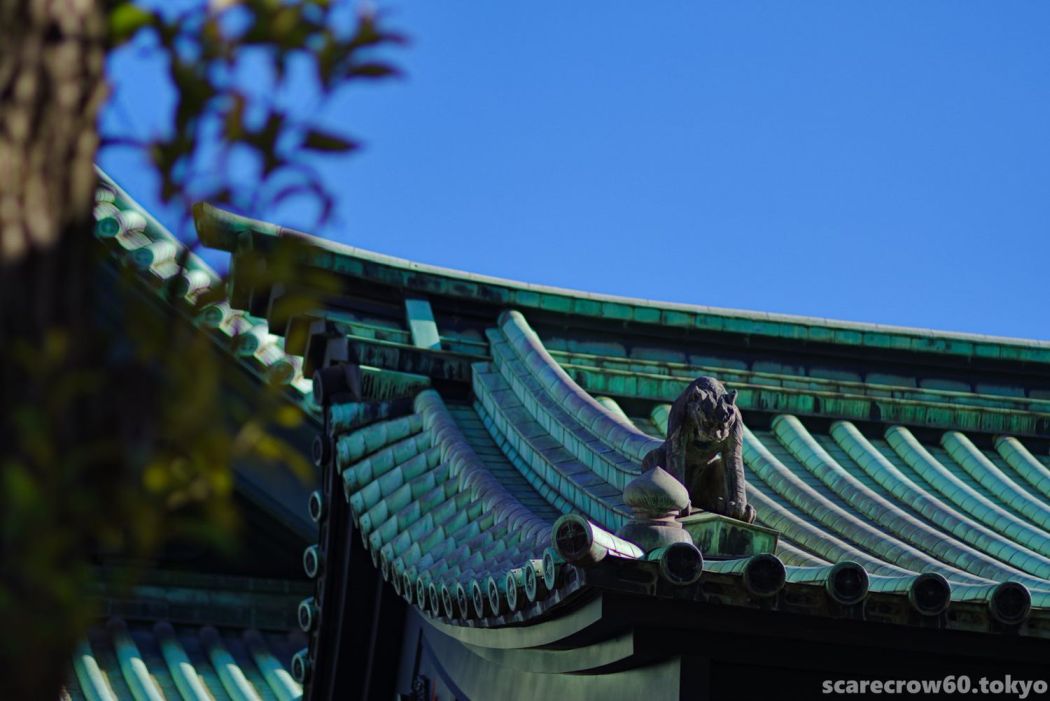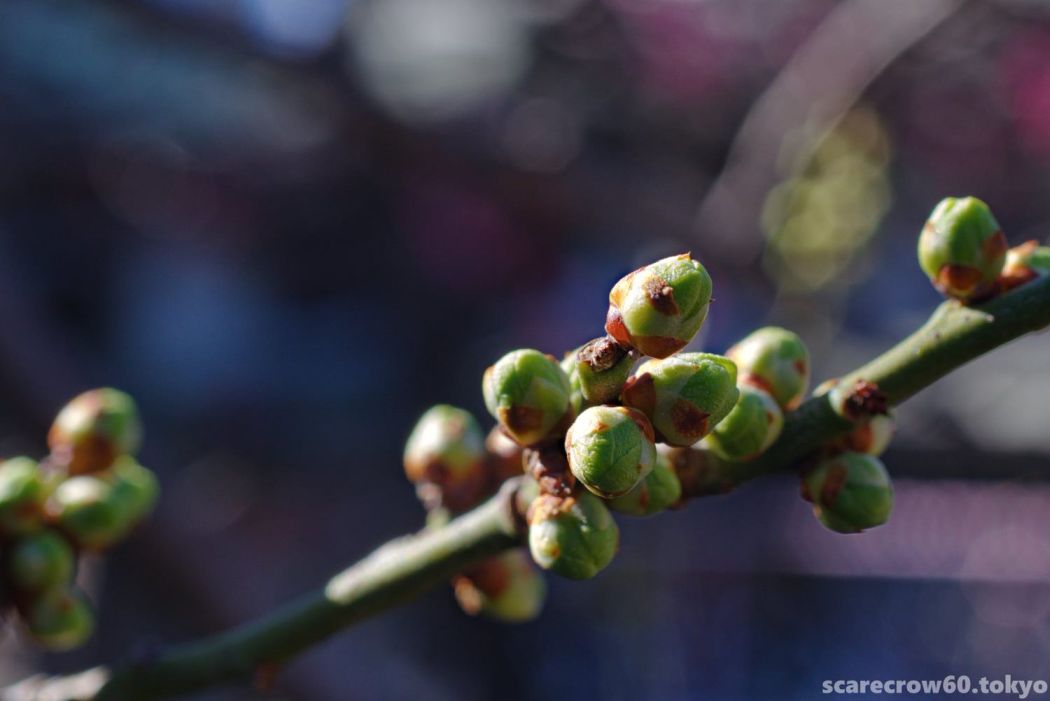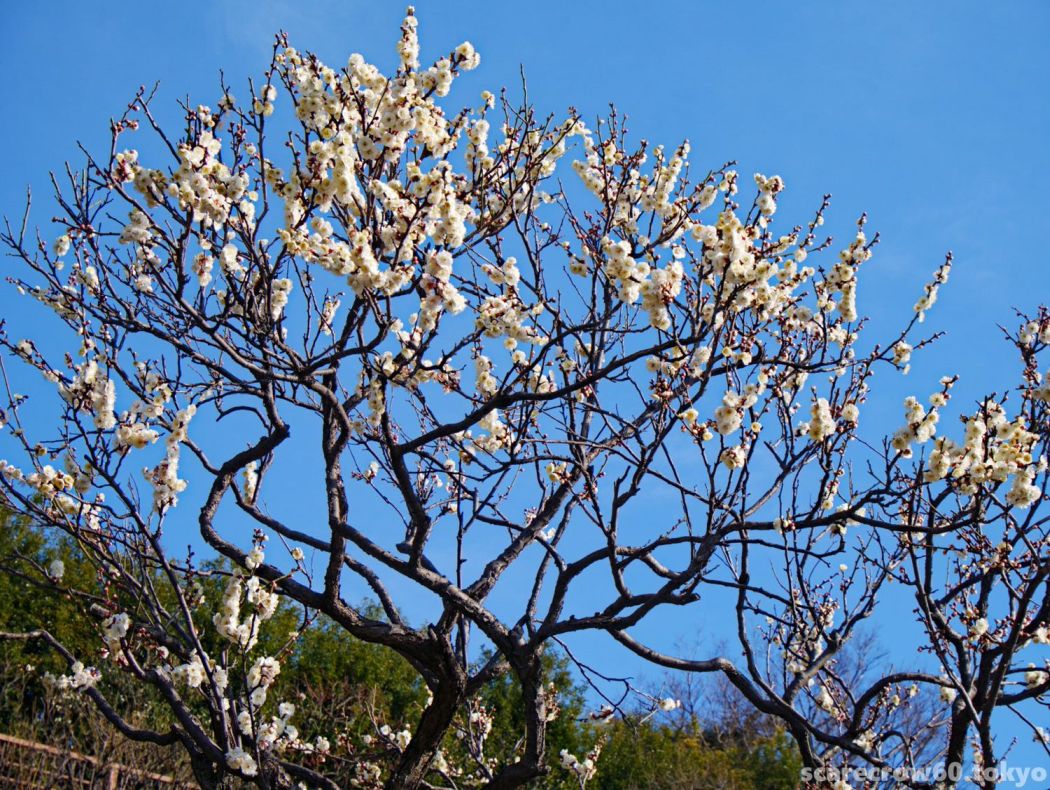This time, I started my photo walk from Shitaya and Ueno with the aim of walking around Tokyo, a city I still know very little about. This was my first visit to Kanda Myojin shrine, which I reached after a short walk from Yushima Tenjin.
As I climbed the stairs of the quiet back approach to the shrine and entered the precincts, I was suddenly struck by the bustle of the crowd.
I understand that Yushima Tenjin was quite crowded because it was exam season, but what is this queue at Kanda Myojin? Does this shrine always attract this many visitors? It is amazing.
Both of the main shrine and entrance gate are painted in bright vermilion, and is quite gleaming.
In addition to Daikoku and Ebisu, the shrine also enshrines the deity Taira no Masakado, who is said to be the god of haunting and protection in the East side of Japan, making it perhaps the most prestigious shrine in Tokyo.
Visitors came one after another. It is very popular. I left the shrine after paying my respects and came out of the shrine a little overwhelmed.
Just south of Kanda Myojin is Yushima Seido. Despite having lived in Tokyo for a long time, this was my first visit to this temple as well.
The name “Seido(Cathedral)” might make the uneducated me think it is a Christian institution, but it was originally built by Tsunayoshi Shogun as a sacred place and home for Confucian scholars in the Edo period (1603-1868). After that, it became the “Shoheizaka Gakumonjo(school)” under the direct control of the shogunate, and after the Meiji period, it was used for various schools (the predecessors of Tsukuba University and Ochanomizu University were also located here!) After being used as a school site, it was designated as a national historic site in the Taisho era (1912-1926), and was rebuilt and restored between 1986 and 1993 to its current appearance.
I don’t know how it looked like before the reconstruction, but the spirit animal on the tiled roof (said to be called “Kiryushi”) looks a bit like a gargoyle in the West (lol).
Turn around at the front to face the Seido = Dachengdian (Confucius Temple). Another spirit animal on the roof of the gate in front is cool.
What a majestic building.
As someone who doesn’t get emotionally moved by religious sites, palaces, or historical sites, I There was a group of young foreigners gathered in front of the Seido, and it looked like they were receiving some kind of lecture. I was impressed that the young people looked rather serious.
The winter sunlight spilling through the gate below is quite poetic.
After leaving Yushima Seido, we are now on Sotobori street.
I quess, this stepped tiled wall seen from Ochanomizu station belonged to Yushima Seido.
After crossing the Hijiri bridge, I was about to pull out of Ochanomizu station when I suddenly noticed Nikolai Hall in front of my eyes.
I knew it was there, but I had never looked at it carefully, so I took a short detour.
However, the rays were already not good at this time. I didn’t go too deep, just came here for now and took off with just one shot. Well, the Russian Orthodox Church is in a lot of trouble right now. Let’s come back to take more shots after things settle down.
So, that’s the end of my four-part article on my Tokyo walk with a single focal length lens. Thank for reading.



